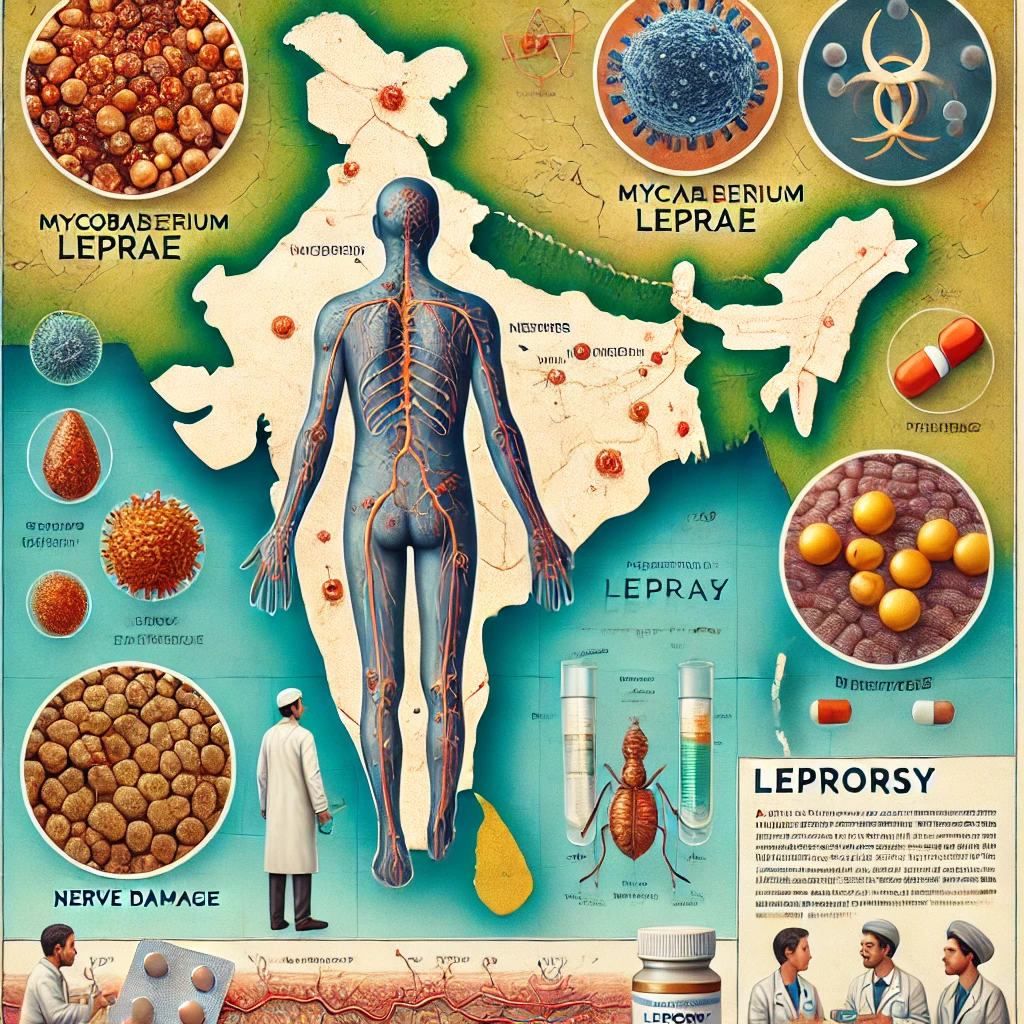Leprosy: Overview
Leprosy, also known as Hansen’s disease, is a chronic infectious disease caused by the bacterium Mycobacterium leprae. It primarily affects the skin, peripheral nerves, mucosa of the upper respiratory tract, and eyes. If untreated, it can cause permanent damage to the skin, nerves, limbs, and eyes.
Causes
- Bacteria: Mycobacterium leprae, a slow-growing bacterium.
- Transmission:
- Prolonged close contact with untreated individuals.
- Droplets from the nose and mouth of an infected person.
- It is not highly contagious, and many people have a natural immunity.
Symptoms
- Skin Lesions:
- Painless, discolored patches on the skin.
- Loss of sensation in the affected areas.
- Nerve Damage:
- Muscle weakness.
- Numbness or tingling in hands and feet.
- Eye Problems:
- Dryness or inability to blink.
- Severe cases may lead to blindness.
- Deformities:
- In advanced stages, fingers and toes may shorten and deform due to repeated injuries or reabsorption.
Types of Leprosy
Leprosy is classified based on the number of lesions and the immune response:
- Tuberculoid Leprosy:
- Few skin lesions and mild nerve involvement.
- Strong immune response.
- Lepromatous Leprosy:
- Extensive skin lesions and significant nerve damage.
- Weak immune response.
- Borderline Leprosy:
- Features of both tuberculoid and lepromatous leprosy.
Diagnosis
- Physical Examination: Check for characteristic skin lesions and loss of sensation.
- Skin Smear Test: Microscopic examination of bacteria in skin scrapings.
- Biopsy: Examining a skin sample under a microscope.
Treatment
Leprosy is curable with early and appropriate treatment. The World Health Organization (WHO) provides free treatment globally through Multidrug Therapy (MDT):
- Rifampicin (antibiotic)
- Dapsone (anti-inflammatory and antimicrobial)
- Clofazimine (antibacterial and anti-inflammatory)
- Treatment Duration: 6 months for mild cases and up to 12 months or more for severe cases.
Prevention
- Early Detection and Treatment: Prevents transmission to others.
- Vaccination: The BCG vaccine (for tuberculosis) offers partial protection.
- Avoiding Prolonged Contact: With untreated patients.
Complications
- Permanent nerve damage.
- Disability or deformity in advanced cases.
- Secondary infections due to nerve damage.
Current Scenario in India
- India accounts for a significant proportion of global leprosy cases.
- National Leprosy Eradication Programme (NLEP) aims to eliminate leprosy as a public health problem.
- WHO declared leprosy eliminated in India as a public health concern in 2005 (prevalence <1 case per 10,000), but sporadic cases still occur.

